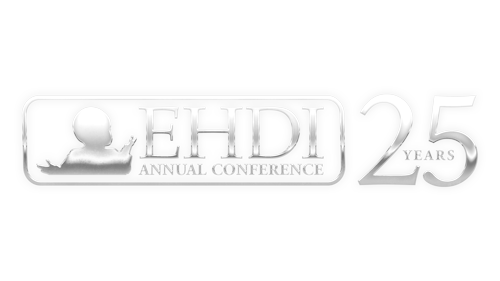2026 Early Hearing Detection & Intervention Conference
March 15-17, 2026 • Jacksonville, FL
3/11/2025 | 3:00 PM - 3:30 PM | The Transition from Early Intervention to Preschool: What is the LRE? | 315/316
The Transition from Early Intervention to Preschool: What is the LRE?
There is often misunderstanding and confusion about the Least Restrictive Environment (LRE) for Deaf and Hard of Hearing (DHH) children as they transition from Part C Early Intervention (EI) to Part B Preschool. In this presentation we will provide recommended practices based on a systematic review of federal laws, federal policy guidance, research and best practice guidelines for EI to preschool transition teams to follow when considering the LRE for young DHH children.
Beginning with eligibility determination and assessment, we examine how IDEA requirements apply to young DHH children. We review the legal mandate to conduct assessments sufficient in scope to identify, not only the child’s current level of language development, but also the unique communication, cognitive, social-emotional, audiological, visual and adaptive needs of the DHH child entering preschool for the first time. This comprehensive assessment leads to development of specific IEP goals and determination of educational placement in the LRE. Determining the goals and the LRE for young DHH children requires IEP Teams to address specific, and often complex, language, learning and access needs, whether the preschool child is developing American Sign Language, spoken language, or both.
The general education classroom is typically the standard LRE placement for disabled students. However, that setting may not be the LRE for young DHH children transitioning from EI. We discuss the five IDEA special factors that an IEP team must consider when determining the LRE. Based on these factors, many young DHH children require fully accessible language and learning environments, instructional expertise of early childhood deaf education professionals, specific accommodations and assistive technology appropriate for young children, and specialized family training and support. Finally, we examine specific federal policy guidance regarding placement decisions for DHH children– including the full continuum of alternative placements designed specifically for young children who are DHH.
- Name 5 needs of young DHH children that must be included in assessments and eligibility determinations
- List 5 Special Factors mandated by IDEA for children who are DHH
- Describe at least 2 characteristics of the Least Restrictive Environment for young DHH children transitioning from EI to preschool.
Presentation:
3545975_18227BarbaraHecht.pdf
Handouts:
3545975_18227BarbaraHecht.pdf
Transcripts:
CART transcripts are NOT YET available, but will be posted shortly after the conference
Presenters/Authors
Barbara Hecht
(Primary Presenter,Co-Author), The Clarke Schools for Hearing & Speech, bhecht@clarkeschools.org;
Barbara F. Hecht, Ph.D., is National Director Strategic Initiatives and Partnerships at Clarke Schools for Hearing and Speech. Dr. Hecht has worked with families of young children with hearing loss and has trained parents, teachers, speech-language pathologists, pediatricians and other professionals for more than 30 years. She served for 11 years as Director of Clarke’s Boston Area Campus and Clarke’s tVISIT early intervention telepractice program. Prior to joining Clarke, she was President/CEO of the John Tracy Center (JTC) for young deaf and hard of hearing children and was on the special education and deaf education faculty at the University of California, Los Angeles, the University of Southern California and the University of San Diego. Dr. Hecht is a co-writer of the 2018 Edition of Optimizing Outcomes for Students who are Deaf or Hard of Hearing: Education Service Guidelines published by the National Association of State Directors of Special Education. She serves on numerous state and national advisory committees and professional organizations and is the current President of the Council on the Education of the Deaf (CED).
ASHA DISCLOSURE:
Financial -
• Receives Salary for Employment from Clarke Schools for Hearing and Speech .
Nonfinancial -
No relevant nonfinancial relationship exists.
AAA DISCLOSURE:
Financial -
Financial relationship with Clarke Schools for Hearing and Speech.
Nature: Salary.
Nonfinancial -
No relevant nonfinancial relationship exists.
Kym Meyer
(Co-Presenter,Co-Author), Worcester State University, kym.meyer@worcester.edu;
Kym Meyer worked in Deaf Education for 30+ years as a teacher, educational audiologist and program administrator, completing an MS in audiology at Gallaudet, PhD in Special Education at UMass-Amherst and Disability & Health Policy Certificate through LEND at UMass Medical School. She created and for 20 years ran the first public school educational audiology consultation program at The Learning Center for the Deaf in Massachusetts. As an Assistant Professor at Worcester State University she teaches #RethinkingAuralRehab to SLP students, emphasizing that language acquisition for deaf and hard of hearing children to be the same as their hearing peers, whether the child is using American Sign Language, spoken English or the child’s spoken heritage language of the home.
ASHA DISCLOSURE:
Financial -
• Receives Salary for Employment from Worcester State University.
Nonfinancial -
No relevant nonfinancial relationship exists.
AAA DISCLOSURE:
Financial -
Financial relationship with Worcester State University.
Nature: Salary.
Nonfinancial -
No relevant nonfinancial relationship exists.
